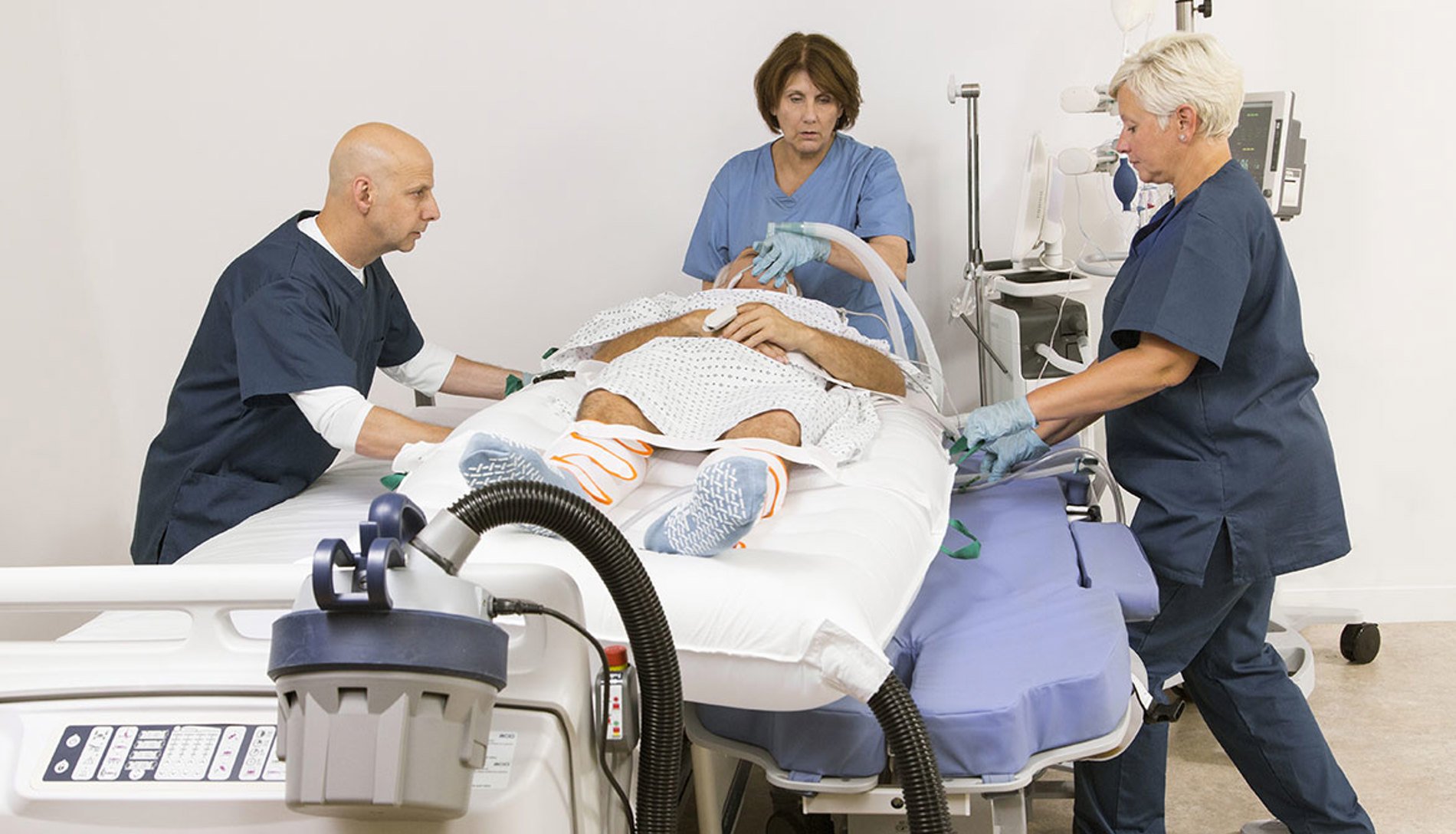Clinical Insights: Reduce injury risk and promote safety with the AirPal system
 Today, we welcome Ali Qureshi, OTR, MOT, Arjo Clinical Consultant and Occupational Therapist, to discuss Arjo’s newest safe patient handling and mobility aid, the AirPal® lateral transfer and repositioning system.
Today, we welcome Ali Qureshi, OTR, MOT, Arjo Clinical Consultant and Occupational Therapist, to discuss Arjo’s newest safe patient handling and mobility aid, the AirPal® lateral transfer and repositioning system.
After receiving his Master of Science in Occupational Therapy in 2014, Ali worked as a staff therapist and manager for 5 years in an acute rehab unit at a San Antonio hospital. Ali is currently a Clinical Consultant for Arjo’s Diligent Program where he aids his clients by providing services to improve clinical and safety outcomes for both patient and caregiver.
Can you tell us how safe patient handling became your passion?
The majority of my career has been in a hospital setting, including inpatient, acute, and management. As my staff and I worked with patients of all shapes and sizes, and as I trained staff on proper body mechanics and minimal equipment use, I often noticed circumstances that seemed difficult to manage. During this time, I became passionate about safe patient handling and decreasing caregiver risk. My role at Arjo as a Clinical Consultant for safe patient handling has really helped me expand on that and help others in the same situation.
What are the most common challenges seen when it comes to lateral transfers and repositioning aids?
Lateral transfers can be very tough based on the size of the patient and the types of surfaces the patient is going to and from, especially if the patient is unable to help. Traditionally, a draw sheet or slide board is used to assist with this, but that still makes for a very manual task that can cause sheering to the patient’s skin and be very uncomfortable for everyone involved; this is exactly where injuries occur. The same would apply for boosting patients in bed.
How does the AirPal assist in overcoming these challenges?
AirPal is an air-assisted patient transfer device that allows caregivers to laterally transfer and boost patients with ease. Not only does it make the transfer less manual, the patient and caregivers are comfortable throughout the process. Whether the patient is of size or extremely fragile, the caregiver will merely connect the air supply hose and gently move the patient. The person on the sending side will initiate with a push to start the momentum of the transfer, with the receiving side providing assistance to safely guide the patient in.

How is the AirPal different from other lateral transfer and repositioning devices available?
The AirPal pad supports patients of up to 1000 lbs and has clear instructions with pictures to assist the caregiver. It also has safety straps to help secure the patient and long handles that allow caregivers on the receiving side to reach and assist while maintaining proper body mechanics and without climbing on the bed. The AirPal air supply has a dial to set the speed of inflation to accommodate the patient, if needed.
How have you seen staff respond after incorporating the AirPal into their workflow?
Staff are always surprised of the increased ease when moving a patient and how gentle the patients report the transfer feels when being moved with the AirPal system. In addition, evidence has shown that caregivers considered air-assisted devices “best-in-class” for overall comfort, ease of use, effectiveness in reducing injuries, time efficiency, and reducing patient risk.1
Where can I learn more about the AirPal system?
Download our August 17th webinar “Up, Down, Back and Forth: Best Practice Use of Lateral Repositioning Devices”.
Visit Arjo to learn more about the AirPal lateral transfer aid or contact your local Sales Representative.
Reference:
- Baptiste A, Boda SV, Nelson AL, Lloyd JD, Lee WE 3rd. Friction-reducing devices for lateral patient transfers: a clinical evaluation. AAOHN J. 2006 Apr;54(4):173-80.